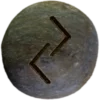Last Updated on December 2, 2024
Table of Contents


Julebukking (pronounced YOO-leh-book-ing) is a festive Scandinavian tradition celebrated during the Yuletide season. Other spellings or names include Julebocking or Julebukk. The name derives from the Norwegian words “jul” (Christmas or Yule) and “bukk” (goat). The practice connects to ancient customs honoring the Yule Goat, a figure tied to fertility, protection, and the harvest.
In modern times, Julebukking often resembles a mix of caroling and costume parties. Participants dress in disguises, often including masks or animal-themed costumes, and visit friends’ or neighbors’ homes. While visiting, they sing songs, perform playful antics, or share riddles. Hosts try to guess their guests’ identities, and if they fail, the masked visitors remain anonymous. Once revealed, participants celebrate together, sharing food, drinks, and laughter.
The tradition’s roots lie in pre-Christian festivals. The Yule Goat (Julbocken) played a symbolic role, ensuring that harvests would flourish. Historically, people crafted goats from straw or wood and paraded them during Yule festivities. By the 19th century, the goat also became associated with bringing holiday gifts, similar to Santa Claus in other cultures.
Julebukking rituals vary by region. In Norway, revelers focus on entertaining and spreading cheer, while in Sweden, people still give goat-themed ornaments or include the goat in community events. Across all variations, the tradition encourages hospitality, joy, and creativity. This custom remains a cherished way to embrace the season’s spirit and preserve cultural ties.
Elder Futhark Runes Linked to Julebukking
The Elder Futhark runes Gebō (ᚷ) and Ehwaz (ᛖ) connect symbolically to Julebukking. Gebō (pronounced GHEH-boh) represents the gift exchange and mutual generosity that define the tradition. The rune reflects harmony, partnership, and gratitude. ![]()
Ehwaz (pronounced AY-wahz) symbolizes movement and teamwork, mirroring the cooperative energy of group activities during Julebukking. Its ties to travel and progress also resonate with participants moving between homes and spreading goodwill. These runes embody the spirit of unity, giving, and shared celebration.
Role in Asatruar Traditions
For Asatruar, Julebukking represents a living connection to ancestral practices. It honors the Yule Goat, a symbol of Thor’s goats or fertility blessings. The tradition reinforces values of community, hospitality, and joy, all central to Asatru beliefs.
Asatruar adapt Julebukking to modern gatherings by including rituals like toasts to the gods or storytelling. It’s a way to merge ancient customs with personal practices. Celebrating together strengthens bonds and deepens spiritual connections to the season.


